THE GREAT ALEXIS MICROVERB4 MYSTERY
As aficionado's of the baffling world of Aliexpress we've seen some odd stuff, but this is just odd beyond reasonable comprehension...
Currently all over Aliexpress you can find a no brand rackmounted multi FX unit, often for as little as £30 including shipping (how is that even possible?) and in some cases even less. They're usually called something like "professional DSP digital effects equalizer" or some similar word salad, but recently we saw one of the same unit that referred to the thing as an "Alexis Microverb4" in the actual listing text. Thinking that sounded strangely familiar we had a closer look and noticed that the front panel layout was uncannily similar to the venerable Alesis Microverb4, an effects unit that was first produced around 1997!

Obviously we had to buy one to find out exactly what was going on there, and luckily we also have an actual Alesis Microverb4 to compare it against.
This is what they both look like side by side. As you can see, the Alexis Microverb4 at the top has the same screen / buttons / encoder / edit knobs grouping as the original Alesis version below, and then the same in / balance / out knobs group. The only real difference is that the Alexis has the level knobs on the right and the Alesis has them on the left.

A closer look reveals that the effects and parameter lists on the front panels are exactly the same, so you'd have to assume they are exactly the same thing... which raises the question of why the hell some Chinese factory somewhere appear to be churning out blatant clones of an effects unit thats not only nearly 30 years old, but nobody really cared that much about it even back then!
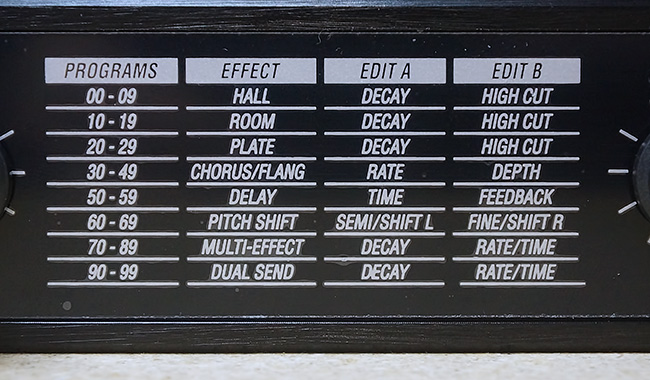
Alexis Microverb4 effects list.
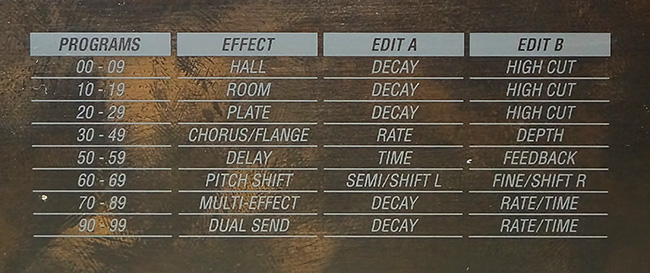
Alesis Microverb4 effects list.
Opening both of them up reveals a fairly standard looking mid/late 90's circuit layout on the Alesis version. The main DSP chip appears to be a Wavefront 2-27-044 M4CG which we're unable to find much about, but we have established that the semiconductor division of Alesis was renamed Wavefront at some point. Presumably this was an in house effects chip set rather than a commerically available off the shelf thing. Later on Wavefront appear to have started selling a standard off the shelf FX chip set called the AL3201BG, which was used in some Alesis Nanoverb 2's and also appears to have been either cloned or licenced (but lets face it, coolaudio are owned by Behringer, so what do we think actually happened?) to become the coolaudio V1000.
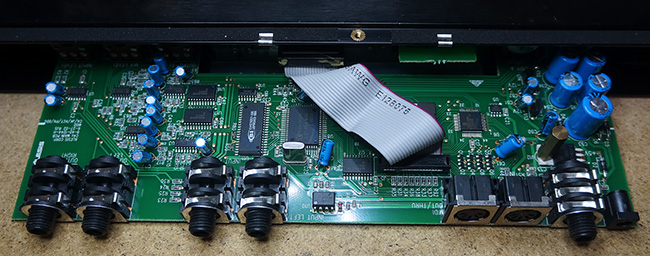
Alesis Microverb4 PCB and Wavefront DSP.
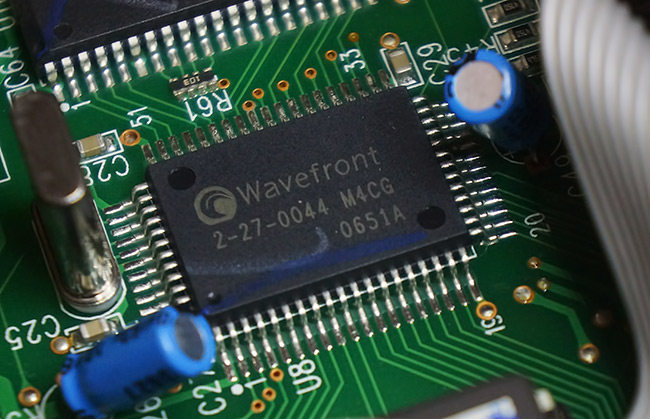
Its when you open up the Alexis Microverb4 that things get a little more confusing. The first thing you notice is that there doesn't actually appear to be an effects unit in there, closely followed by "whats that missing part, that looks like it should be a optocoupler for the midi input...."

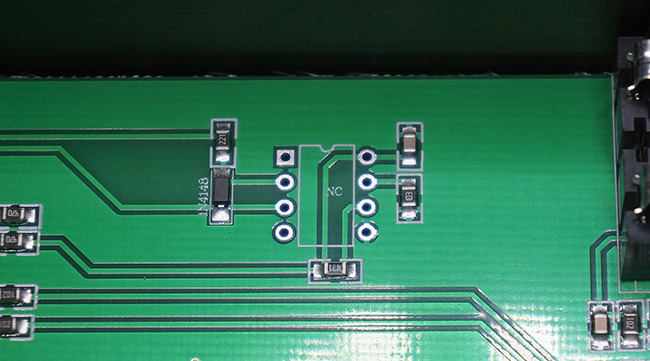
After actually attempting to operate the midi functions we can say that the midi doesn't work. Mainly because that optocoupler is missing so the midi input signal isn't actually going anywhere, but also because midi functions don't even appear to be in the operating system! Pressing the midi button as suggested in the manual (more on the manual later) does absolutely nothing.

This does rather raise the question of why the components around the missing optocoupler are there, and even more importantly why it actually has midi in and out sockets on the back if they're not actually connected to anything...
You can't help thinking it'd be cheaper to just blank off the holes in the panel. Nothing about this unit makes any sense!
After disassembling the whole front panel and gazing in awe at the astonishingly low quality of the data entry encoder which barely works brand new straight out of the box, we finally discover the actual effects processor, and thats where things get even more weird.


That 48 pin surface mount chip in the middle of the front panel is the whole effects processor and theres pretty much nothing else to it, but as you can see from the image we're never going to be able to look up the datasheet for it because whoever made this thing has physically milled any identifying markings off the surface of the chip to hide what it actually is. This would suggest that whoever is manufacturing these things either doesn't want people copying their unit, which is unlikely given that they've pretty much stolen the entire thing in the first place, or they really shouldn't be using these chips at all for some reason. Maybe they are actual Alesis / Wavefront chips that have come from a very dubious source and need to be untraceable. Short of physically removing the cap from the chip and looking at the die with a microscope theres not much chance of working out exactly what it is. Possibly its actually a different version of the Wavefront chip set in the original Alesis unit. If the manufacturer happened to 'aquire' a warehouse full of these things then that might explain why they're cloning a 30 year old piece of kit at all.
The final Alexis / Alesis absurdity is contained in the 4 page manual you get with the Alexis unit, where they've blatantly just copied the genuine Alesis manual, but not even bothered to remove the name Alesis!
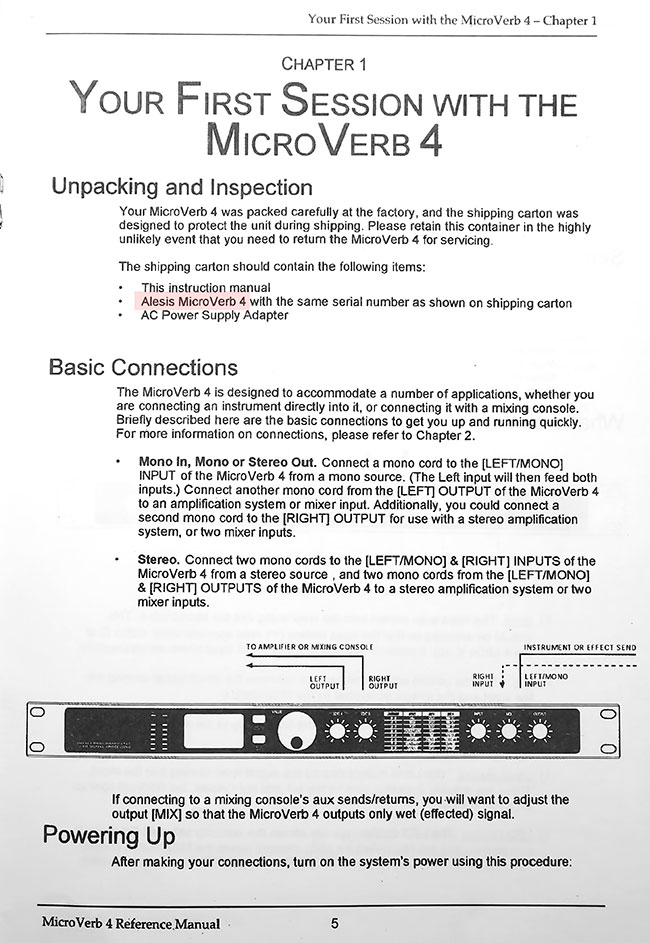
Alexis Microverb4 manual above and Alesis Microverb4 manual below...
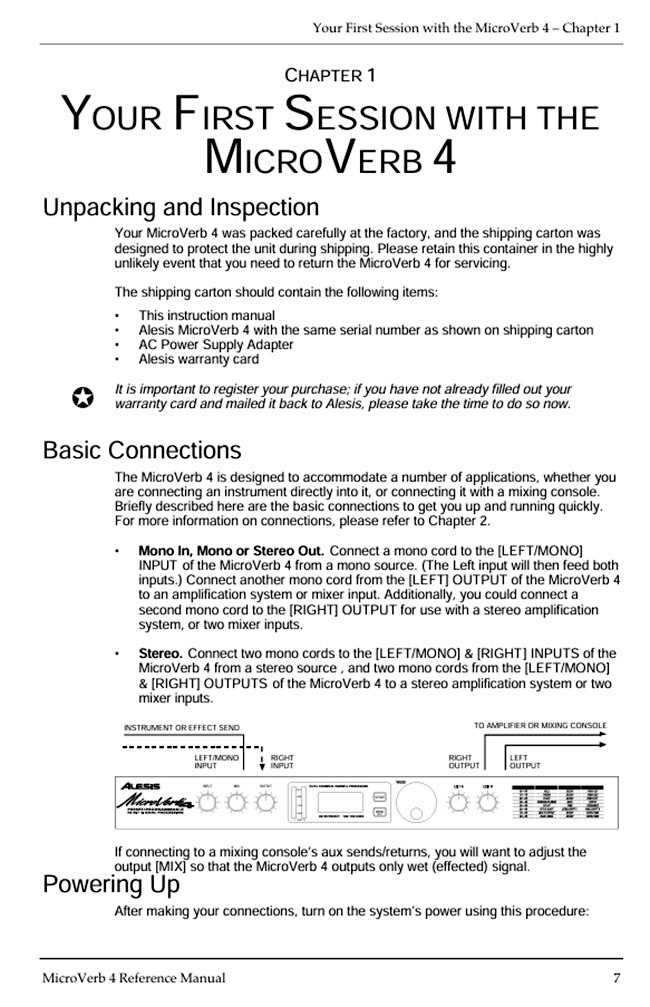
The questions remain... just what in the name of Christs pyjamas is going on here and why does this Alexis unit even exist? Why on earth is someone in China cloning an effects unit thats nearly 30 years old? What is that DSP chip they seem so keen to hide? If its not a Wavefront DSP of some sort then why bother mentioning Alesis or the microverb4 in the first place as it wouldn't be even slightly relevant? If you happen to have a huge load of those DSP chips that you shouldn't have, why draw attention to it by making your unit look so much like another unit and calling it an absurdly similar name, then never even mention that name anywhere on the product itself, but 'accidentally' call it an Alesis in the manual? It seemed like back in the 90's and early 2000's there were plenty of very similar units that had the same kind of effects and possibly used the same chip set, so why call this thing a microverb4 at all?
And another thing, what that the hell is going on with the midi? I mean.... why?
If you have any answers to these questions they by all means let us know.
So how does the Alexis Microverb4 sound? Pretty much how you would expect i.e. absolutely dreadful. Compared to the actual Alesis Microverb4, the Alexis version sounds like you're listening to it underwater while trying to tune a radio through static with an extraordinarily restricted bandwidth. The level clip LED's appear to be just power LED's as opposed to actually indicating any kind of clipping! Maybe the main DSP is actually OK, but you'd never know it under the layers of woolly noise and distortion that the rest of the circuit, or rather the complete lack of any rest of the circuit, seems to pile on top of any signal.
Many of the presets are in the same places on both units, but you'd barely recognise them. You get the distinct impression that whoever made the Alexis unit has just copied the effect and parameter list graphic from the front of the Alesis and then in several cases not bothered to actually map them onto the controls, as some of the parameters certainly aren't controlling what they're meant to be. Mysteriously all 10 of the Alexis 'multi effect' presets from 70-79 seem to be absolutely identical and several presets in each section appear to be so similar that they're completely pointless.
Having said that, remarkably for something that costs around £30 including shipping from the other side of the planet, the casing is actually made from steel and feels pretty sturdy. The data entry encoder is hilariously shit and could do with being replaced with something better, but the rest of the controls are OK and work perfectly.
Is it actually a microverb4? Who knows?
Do the specs quoted in the back of the manual that have clearly just been lifted wholesale from the Alesis manual actually bear any kind of relation to reality? AH HAHAHAHAAAA!
Is it moddable? More on that in the next exciting episode of 'just what the shuddering fuck is this all about then'?
UPDATE:
Thanks to some detective work by Bluesky user extralife we might have a candidate for what the DSP chip actually is. It looks like it could possibly be a mvSilicon BP1048, or one of their other what they call "Audio Application DSP/Processor" chips. The datasheets can be found HERE.
![]()
Given that theres literally no other chips in the Alexis box other than a few 4558 opamps and looking at the front panel PCB layout and circuit tracks, its clear that the DSP chip must also be driving the level bars and LED number display, so not only is it going to need an onboard effects processor, but its also going to need a fair number of user programmable in/out pins as well. The mvSilicon BP1048 would certainly fit the description and would explain why the effects preset graphic on the front panel doesn't actually line up 100% with what the effects actually are or the parameter controls, but if it is a BP1048 then that doesn't explain why any identifying marks on the chip have been removed, or more importantly why they bothered copying the panel graphics or even getting the name Alesis or microverb4 involved at all. It suggests they bought an off the shelf version of the mvSilicon BP1048 with effects programs onboard, then completely randomly selected an effects unit from the late 90's and based on absolutely nothing decided thats what their new unit is a clone of. They then copied everything about it including its appearance, the entirely incorrect effects list and parameter graphic on the panel, and even the manual, but not the actual functions...





